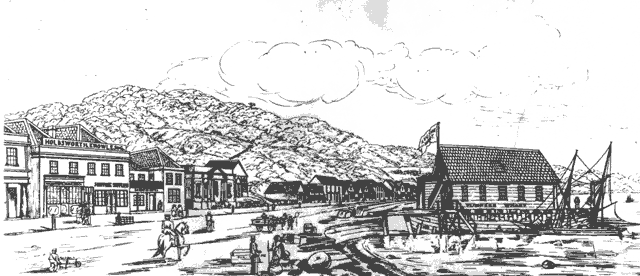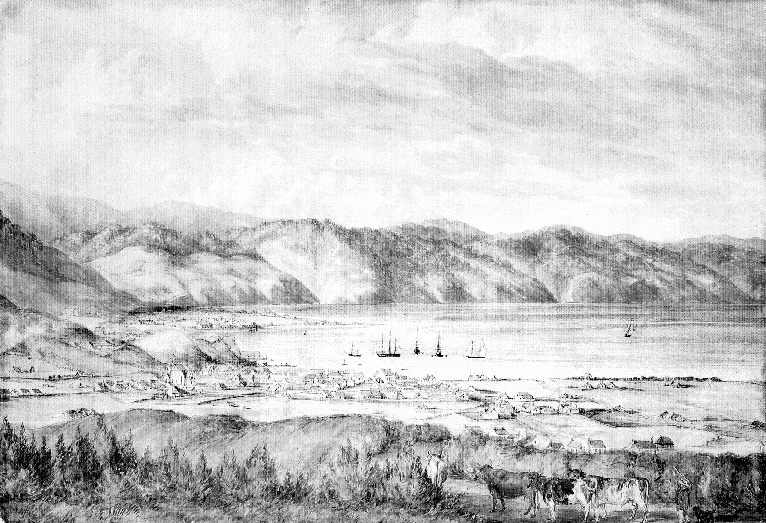|
Wellington of the 1850s was a thriving settlement, with a population of about 5000
|
?
1840 survey
The New Zealand Company surveyed the site of the Town of Wellington during 1840. Wellington had been divided up into 1100 one acre sections, most of which had been purchased by the early settlers. The 1840 plan of Wellington looks very similar to the city of today, with street names and layout instantly recognisable, e.g. features such as Parliament grounds and the Bolton St Cemetery.
Many of the streets and familiar landmarks of Wellington are named after the early European settlers.
A town develops
By the 1850's Wellington had recovered from earlier recession and warfare. It's merchants were prospering and sheep farming was booming in the Wairarapa.
John Plimmer's writings provide a picture of Wellington at the time. Although the town was growing quickly, streets were very basic and access around and out of the town was at times very difficult.
?
John Plimmer noted that the "impassable bog" of Te Aro, where Courtenay Place is now located. The narrow beach that was then Lambton Quay was sometimes little better. Plimmer assisted a woman who was trying to carry a bed along the beach, and they (and the bed) got very wet from the wash (from the sea).
Fire sometimes damaged buildings along Lambton Quay. In 1842 flames fanned by a howling nor'wester destroyed about 40 wooden building driving people to wade into the sea.
A culture develops
New settlers arriving in the 1850's would have been able to find someone to build their house, transport them and their goods, provide them with food and accommodation, or to marry or bury them. In their leisure time they could have attended the theatre or a lecture at the athenaeum, or enjoyed a meal and entertainment at a hotel.
The many large buildings in the settlement gave Wellington a prosperous, settled air. A quirky feature of these buildings was their concession both to limited building material and risk of earthquakes. Many masonry buildings looked like they were constructed from wood. An existing example of this is the Old Government Buildings on Lambton Quay completed in 1876.

